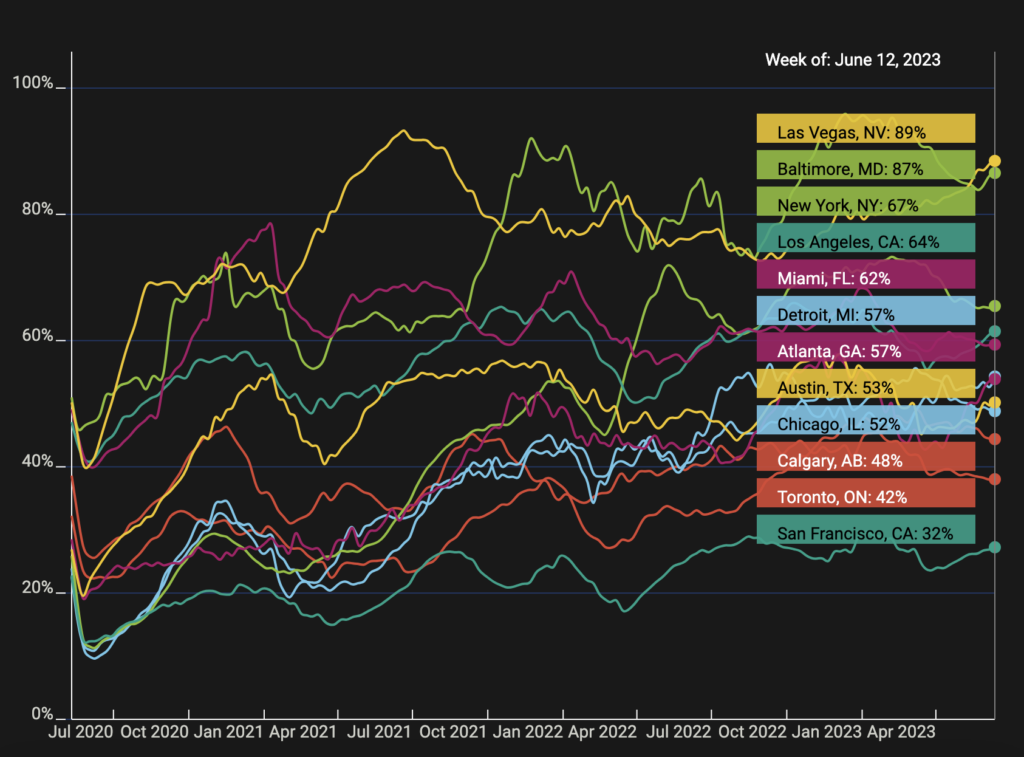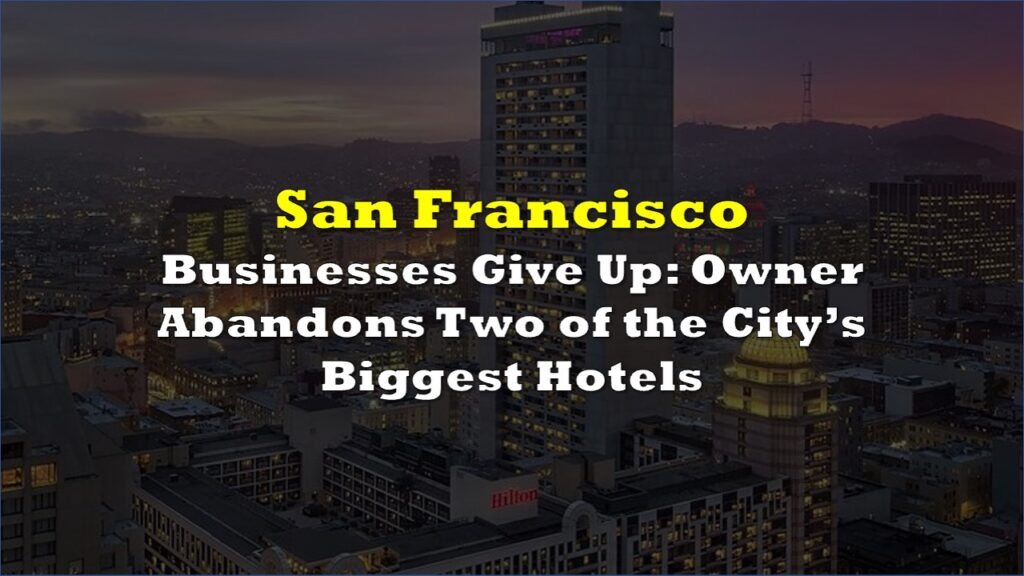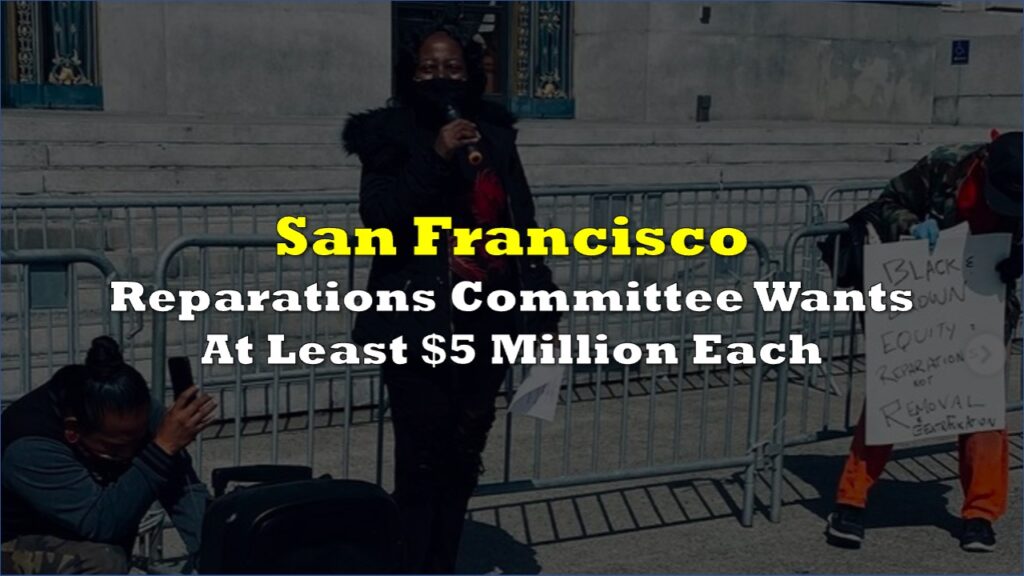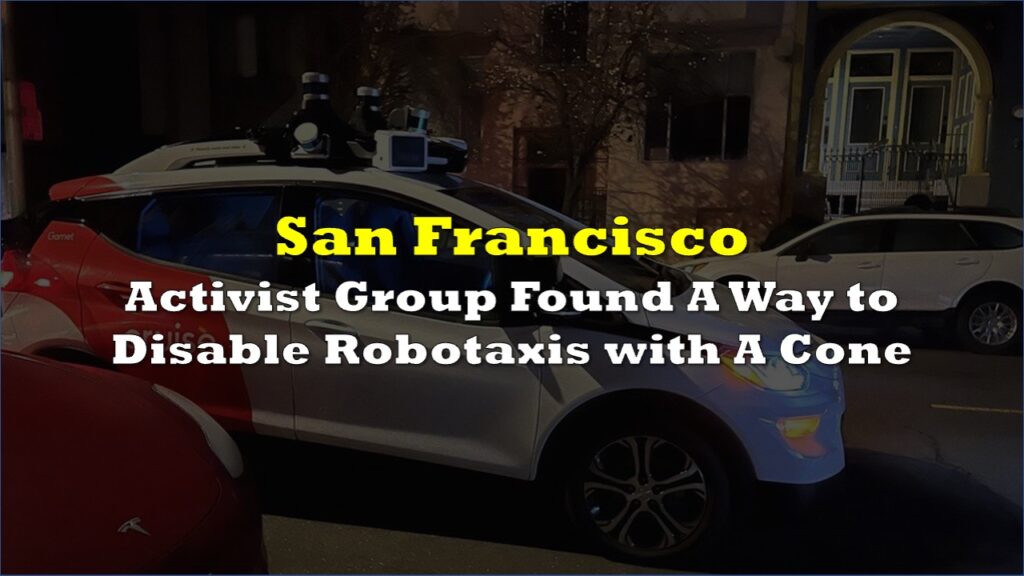San Francisco’s downtown continues to grapple with a lackluster recovery, as foot traffic remains at pandemic levels, signaling a prolonged path to revitalization.
The city’s once-thriving tech and business landscape has suffered a rapid decline, exacerbated by a surge in crime, an undermanned police force, an escalating homeless crisis, and rampant drug abuse. High rent costs, a soaring cost of living, mass tech industry layoffs, and a growing vacancy crisis have compounded the city’s challenges, with the COVID-19 pandemic further magnifying the issue.
Downtown San Francisco, in particular, has borne the brunt of these hardships. The combination of factors, including higher insurance expenses and a surge in remote work, has led to a mass exodus from the area. Office building vacancies currently stand at a staggering 33%, while even small businesses catering to the downtown crowd have been forced to shutter due to dwindling foot traffic.
Numerous attempts by Mayor London Breed and the city to revive downtown San Francisco have fallen short, with programs yielding only fleeting successes. Experts point out that the city’s recovery efforts fail to address the core issues: affordable rent and safety. Residents and business owners alike demand reasonable rent rates and a secure environment, which are essential for revitalization.
The latest blow to San Francisco’s recovery comes from a University of Toronto School of Cities report, which ranks the city’s downtown recovery as the worst in the pandemic aftermath. Mobile phone data analysis across 63 US and Canadian cities reveals that San Francisco recorded a mere 32% of the foot traffic it saw in Spring 2019.
Note that the study only uses anonymized mobile phone data to count the number of unique visitors, based on the number of mobile device pings in a city’s downtown area in the specified time period, and not the activity (e.g. phone calls or active data consumption) on these mobile devices.
Researchers at the University of Toronto used cell phone usage to measure the rebound from Covid in different downtowns, and no big American city's is more than 2/3 of what it was. SF is by far the worst off, at only 1/3 of 2019. pic.twitter.com/Hi9AljI7dJ
— Paul Graham (@paulg) August 13, 2023
Comparable figures for the following years, including Winter 2022-2023, also show a stagnant 32%, despite the city’s efforts.

In contrast, other Californian cities, such as Bakersfield and Fresno, have achieved remarkable recoveries, attracting an influx of people from San Francisco and Los Angeles. Cities like San Diego, Sacramento, San Jose, and Los Angeles have demonstrated significant progress, with foot traffic percentages ranging from 63% to over 88%.
Experts remain cautiously hopeful, as the emergence of AI firms in San Francisco could potentially drive down office space values by up to 40%, making rents more affordable and stimulating recovery. However, uncertainties about the city’s potential “rock bottom” persist.
Analysts stress that San Francisco must align with market trends and create a welcoming atmosphere for businesses, particularly those with on-site workers, offering incentives to stay. Strategies like bonus amenities and lower taxes, seen in neighboring San Jose, could help San Francisco turn the tide and embark on a path to revitalization.
Information for this story was found the sources and companies mentioned. The author has no securities or affiliations related to the organizations discussed. Not a recommendation to buy or sell. Always do additional research and consult a professional before purchasing a security. The author holds no licenses.









